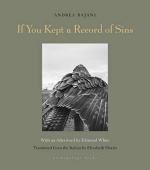|
This section contains 808 words (approx. 3 pages at 400 words per page) |

|
The palace
The palace is symbolic of oppression, and the impossibility of forgetting the past. For the Romanians, it is a painful reminder of the country’s history but also a source of pride and fascination, an impressive spectacle. It dominates the cityscape, mirroring the way Ceauşescu dominates the imagination of the sightseers, who cannot grasp the enormity of his crimes just as their cameras cannot fit the whole building into one picture.
The egg
Like a cocoon, the egg symbolizes death and rebirth. The egg is closely related symbolically to coffins in the novel, but it also represents an opportunity (however dubious) for transformation. It is a symbol of capitalism, too: a gimmick produced by cheap labor and sold to wealthy consumers.
Coffins
Coffins symbolize the reduction of human life to mundane and anonymous uniformity. Viarengo’s coffins remind Lorenzo first of dead soldiers and...
|
This section contains 808 words (approx. 3 pages at 400 words per page) |

|




